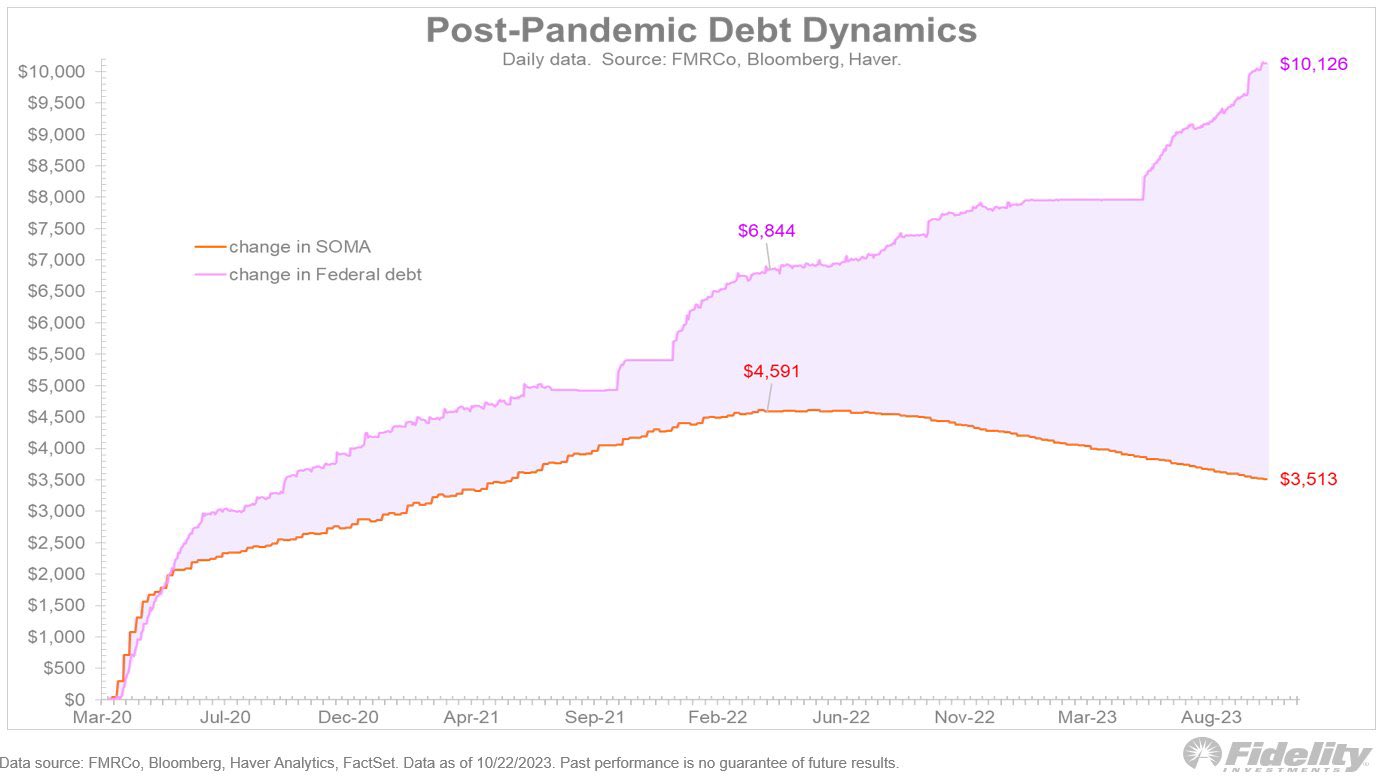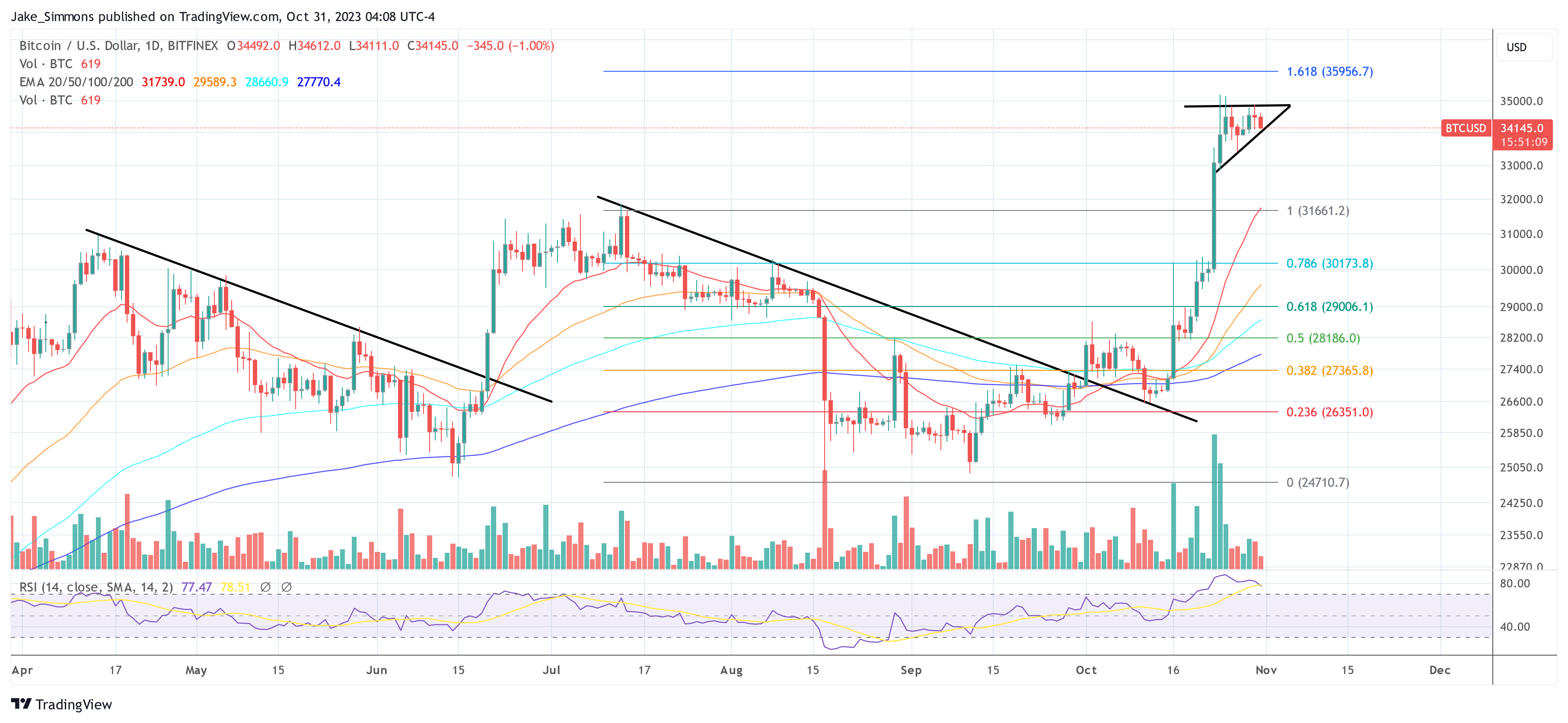In a recent post on Recognized as an SEC-registered investment advisor, Lumida Wealth is known for its specialization in alternative investments and digital assets.
Ahluwalias tweet emphasized the need to monitor Bitcoin’s response to specific macroeconomic events. He stated: “The test for Bitcoin as a macro asset will be: ‘What happens if there is a failed Treasury auction?’ This year, Bitcoin rose during (1) the March bank failures and (2) when Treasury yields roiled the markets. Here is the third test…’
Will Bitcoin see another 50%+ rally?
As a reminder, the price of Bitcoin skyrocketed by over 55% in the wake of the US banking crisis earlier this year. On March 10, 2023, the unprecedented collapse of Silicon Valley Bank, attributed to a bank run combined with a capital crisis, became a focal point of the broader 2023 banking crisis in the United States. This caused a domino effect in which several small to medium-sized American banks collapsed within five days. As stocks in the global banking sector plummeted, Bitcoin saw a significant increase in its value.
More recently, Bitcoin has been on the rise even as interest rates remain unsettled in global markets. Now that the yield on ten-year US government bonds has exceeded the 5% mark for the first time in sixteen years, there are indications of rising government bond yields. Typically, such yield increases can prompt investors to reconfigure their portfolios away from risky assets, increasing market volatility. However, like gold, Bitcoin has recently acted as a safe haven in turbulent times.
Elaborating on the topic, Ahluwalia explained: “The Bitcoin rally is partly due to concerns that the Federal Reserve may have to intervene with Yield Curve Control or QE. […] Fidelity argues that the Fed may need to engage in Japanese-style yield curve control. If so, that would be strongly bullish for real estate, stocks, Bitcoin, bonds, REITs, TIPS, and real assets in general. It would also be bearish for the USD. The US faces difficult choices.” He further emphasized the importance of structuring portfolios to withstand potential economic shocks, and underlined the importance of commodities in weathering inflationary pressures.
Ahluwalia shared his views on the current state of the Federal Reserve and Treasury markets, pointing to recent Treasury auctions that showed softer bid-to-cover ratios. “There is a legitimate argument that the Fed may need to intervene in Treasury markets. Recent Treasury auctions have produced weaker bid-to-cover ratios. Japanese and American households are the marginal buyers…and they have been rewarded with losses,” Ahluwalia noted.

Three Peat for BTC as a safe haven
He added that the Fed’s balance sheet “is already upside down […] it has the equivalent of negative equity (called a deferred asset) – an accounting treatment not allowed for private companies… The Federal Reserve… has $1.5 trillion mark-to-market losses because it bought government bonds and MBS. For the first time in 107 years, this bank has a negative net interest margin. The losses are about to exceed the capital base.”
Ahluwalia explained that a Treasury auction is considered failed when the U.S. Treasury initiates the regular auction of government securities, such as Treasury bills, notes or bonds, but fails to attract enough bids to cover the entirety of the securities offered . Essentially, this indicates a lack of investor interest in acquiring sovereign debt instruments at the predetermined interest rates or yields.
On Bitcoin’s intrinsic value, Ahluwalia commented: “My view on Bitcoin is that it is a ‘hedge against negative real interest rates’. That’s CFA talk for what Bitcoiners colloquially call ‘money printer go brrr’.” He also highlighted the possible consequences for risky investments if long-term interest rates were to spike significantly.
“If long-term interest rates actually rise, this would have negative consequences for risky assets such as long-term government bonds. The higher discount rate would cause a revaluation of stocks – just like we have seen in 2022 and the past two months. However, if Bitcoin can recover during a “yield curve dislocation scenario,” Bitcoin would get a “three-peat.” Bitcoin would then find a welcome home on a greater number of institutional balance sheets,” Ahluwalia concluded his bullish thesis for Bitcoin.
At the time of writing, BTC was trading at $34,145.

Featured image from Shutterstock, chart from TradingView.com

